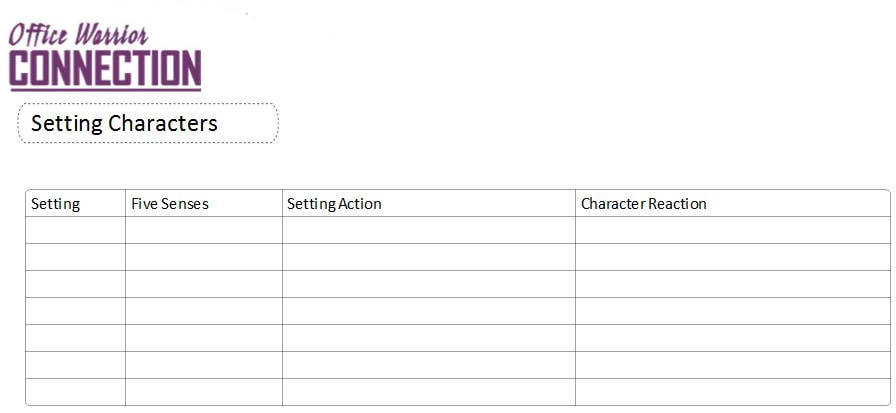|
5/16/2019 Day 16 - Setting as a CharacterHow Setting Can Be A Character Most novels have several different settings within them. Each setting will have its own characteristics, from a bustling, noisy café, to a sleepy quiet waiting room, to a dark forbidding forest. Those characteristics can cause our characters to act or react in very specific ways that have to do with their hopes, fears, and aspirations. Consider for a moment, Black Beauty. One scene that comes to mind is at the track during a downpour. The rain is making the track slippery with mud. Our characters have to make a choice about racing Black Beauty in the rain or forfeiting. When they decide it will be worth it to test Black Beauty, they find out he's a mudder (a horse that runs very well under these weather conditions). Settings that have an effect on our characters should be developed as characters themselves, at least for the scenes in which they take place. They can be used as foils for increasing tension or providing relief as a breather after moments of high action. On the one hand, a walk in the forest can be scary if the forest is dark and foreboding, but it can also be a moment where a character regroups their thoughts or finds peace in the dappling sunlight as it comes through the gently rustling leaves. The setting characteristics outlining exercise from Day 4 was very similar to today's exercise, but here we will go one step deeper and focus on presenting our setting as a character. This exercise is about enhancing your settings by adding more detail in a very deliberate way. Therefore, you could start from the worksheet from Day 4, but consider creating a whole new worksheet in order to take that closer look. Exercise: Setting Characters worksheet
Setting Characteristic Parameters Setting - Write in the chapter number and scene number o the scene. I like to use a shorthand notation of C1S1 which represents Chapter 1 Scene 1. Optionally, you can use a short description. Five Senses - Define the ways you have used each of the five senses to evoke the mood of the setting. Mood depends on how you want the character to react. If this is an action sequence, the mood should amp up the character's behavior, but if this is a breather, the mood should be restful. Action - The mood of the setting may be the "action" of the setting, but our environments can be more than mood. Take for instance, an earthquake. The mood of the setting might be carefree or the normal day-to-day apathy we all experience as we go about our daily routines, but the sense of the ground rolling beneath our feet and the low rumble complemented by the tinkling of glass from the vibrations of an earthquake would also be an "action" in our setting. Character Reaction - Describe the way the character(s) react(s) to the setting. Analysis of the Worksheet
DOWNLOAD: Setting Characters Worksheet Template Instructions Tips for working by hand If you'd like to work on notepaper or set up your own table in your favorite application, include the columns listed above for each table. The percentage listed is approximately the size you should make each column. Add rows as you work down through your chapters. Leave a little extra space between scenes as you work in case you want to add more details as you work further into your story. Return to the Table of Contents Go to Day 17 - Head Hopping Comments are closed.
|


 RSS Feed
RSS Feed
